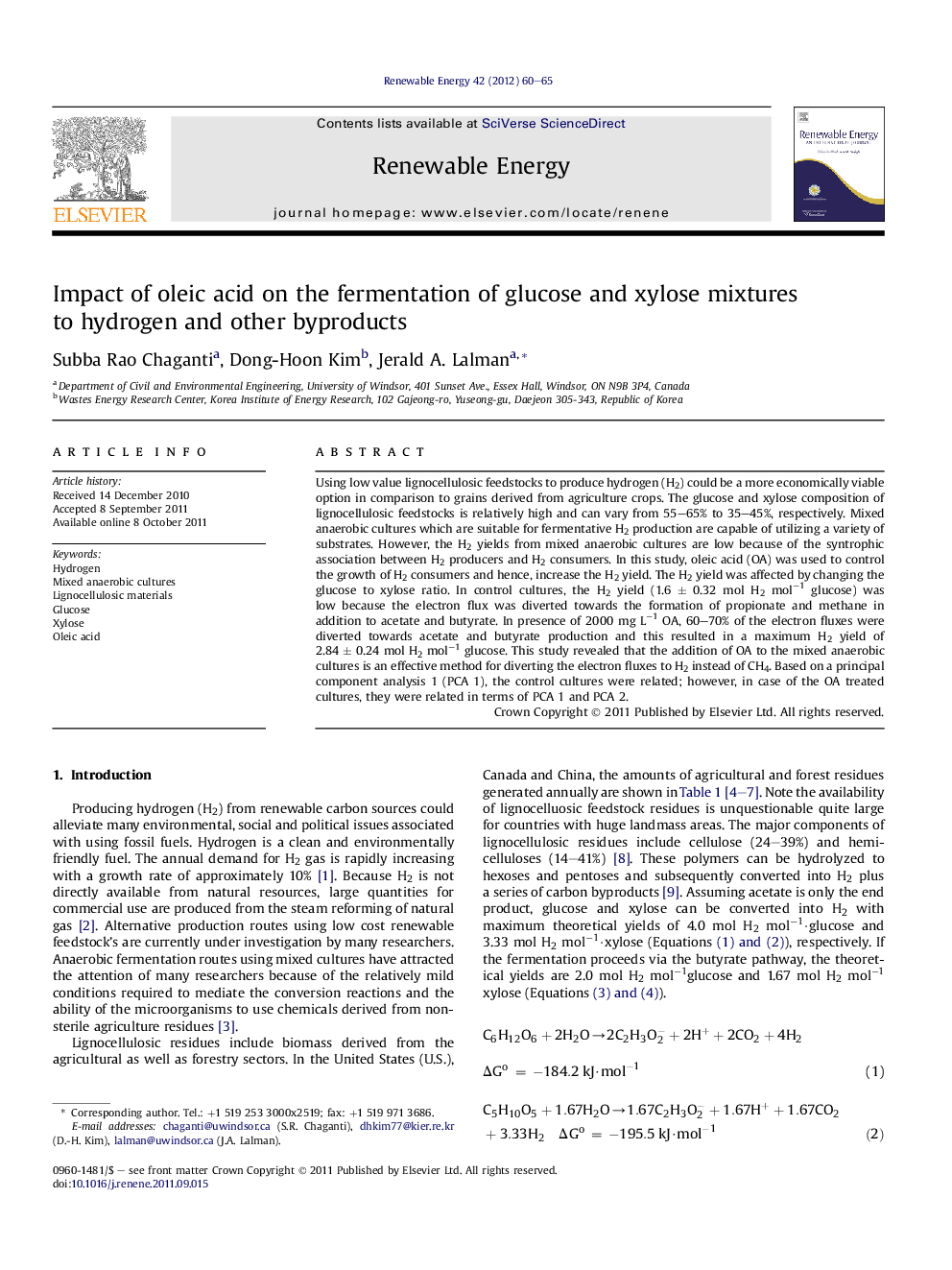| Article ID | Journal | Published Year | Pages | File Type |
|---|---|---|---|---|
| 301014 | Renewable Energy | 2012 | 6 Pages |
Using low value lignocellulosic feedstocks to produce hydrogen (H2) could be a more economically viable option in comparison to grains derived from agriculture crops. The glucose and xylose composition of lignocellulosic feedstocks is relatively high and can vary from 55–65% to 35–45%, respectively. Mixed anaerobic cultures which are suitable for fermentative H2 production are capable of utilizing a variety of substrates. However, the H2 yields from mixed anaerobic cultures are low because of the syntrophic association between H2 producers and H2 consumers. In this study, oleic acid (OA) was used to control the growth of H2 consumers and hence, increase the H2 yield. The H2 yield was affected by changing the glucose to xylose ratio. In control cultures, the H2 yield (1.6 ± 0.32 mol H2 mol−1 glucose) was low because the electron flux was diverted towards the formation of propionate and methane in addition to acetate and butyrate. In presence of 2000 mg L−1 OA, 60–70% of the electron fluxes were diverted towards acetate and butyrate production and this resulted in a maximum H2 yield of 2.84 ± 0.24 mol H2 mol−1 glucose. This study revealed that the addition of OA to the mixed anaerobic cultures is an effective method for diverting the electron fluxes to H2 instead of CH4. Based on a principal component analysis 1 (PCA 1), the control cultures were related; however, in case of the OA treated cultures, they were related in terms of PCA 1 and PCA 2.
